Audeze MM-100 HIFI Planar Headphones – Bleeding Edge Planar Precision And Consistency
Audeze MM-100 is a $399 USD pair of over-the-ear planar magnetic headphones, designed for studio usage and music lovers, with a heavily improved comfort compared to other studio headphones, with the epic Audeze build quality and a low impedance, and high SPL, designed to work well with any interface and studio equipment piece. Today we will review the MM-100 and compare them to other high-quality headphones from the same price range, including Eretich Thalia (599 USD), HarmonicDyne Zeus Elite (379 USD), and OLLO S5X (489 USD)

Introduction
Audeze is one of the most popular headphone manufacturers, and especially when it comes to the planar driver technology, they are considered fathers of the the tech in headphones, as they have been a significant reason why this technology got popularized a few years ago, with the release of their LCD-2 Headphones, that have been a stable for music lovers. We have reviewed many of the new Audeze headphones, including the flagship LCD-5 and mighty MM-500 designed for studio work, so today we will explore what an entry-level model sounds like. As an Amazon Influencer, I earn from qualifying purchases, and using the purchase links in my reviews helps me maintain this website and Youtube Channel. Huge thanks to Audeze for providing the sample for this review, in exchange for my honest opinion.
PROs – Excellent build quality, Detailed yet enjoyable sound, Very consistent across multiple sources, consistent regardless of the volume you’re listening at, Good default cable, Can use the cable connected to a single ear cup, gel-filled ear pads that are super comfortable, an excellent precision and clarity. Extreme price / performance ratio.
Cons – Single ended cable only, Heavy at 475 grams, Strong clamping force.
Product Link
Amazon – https://amzn.to/3XfRkcG
Build Quality/Aesthetics/Fit/Comfort
Audeze MM-100 is a high-end planar magnetic headphone, and regardless of the price, it bears the refined Audeze production process, with zero error, high quality connectors, and the beautiful chassis made of magnesium and steel. The planar drivers are tuned for production-grade accuracy, and for exploring this, I have worked on a couple of albums and videos using the MM-100, so we will have a dedicated segment in our review to explore just the studio and music production usage of MM-100.
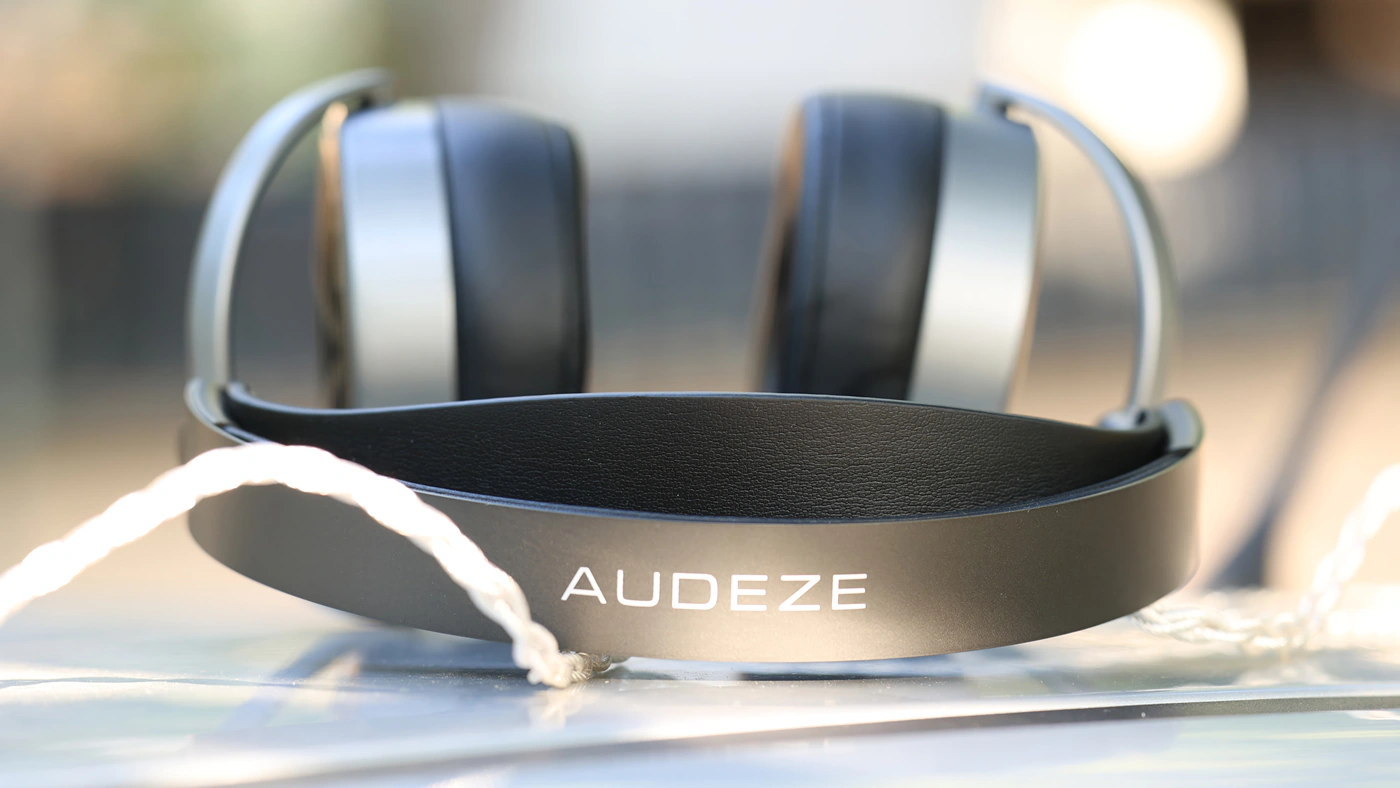
As most Audeze headphones have been notorious for requiring high-end amplifiers and powerful sources to work properly, Audeze dedicated the new MM-100 for the studio engineer who has to plug their headphones in an interface, and MM-100 comes with high efficiency drivers, being adequate for usage with a variety of sources, including interfaces typically used in studio work. Like the Audeze MM-500, the entry-level M-100 model is made in collaboration with the Grammy award winning engineer Manny Marroquin.
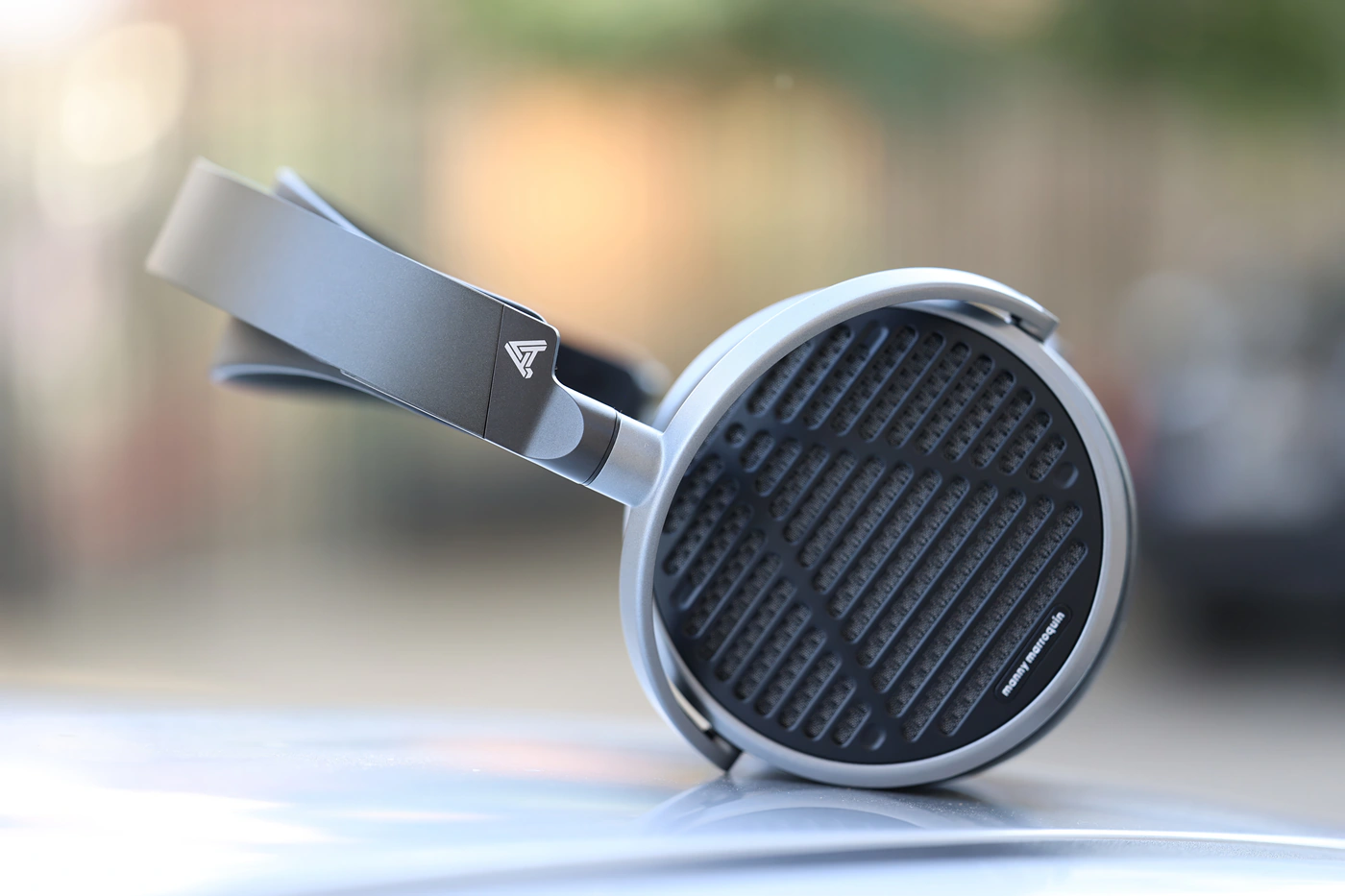
As we know by now that Audeze LCD-XC, LCD-5 and MM-500 are often used in studios for producing your favorite tracks, Audeze decided to make a more affordable option that will replace the entry-level model used in most music production, namely Audio Technica ATH-M50X. An engineer using M50X was not doing it out of pleasure or because they sounded great, but because they were quite affordable, especially compared to the high-end Audeze models that you wouldn’t bring out of the steps of your home. MM-100 is redesigned to actually take out the room from the equation and sound the same for all heads, as they force themselves onto your head in a specific position, offering the same clamping force, same listening position and same sound every single time you put them in.
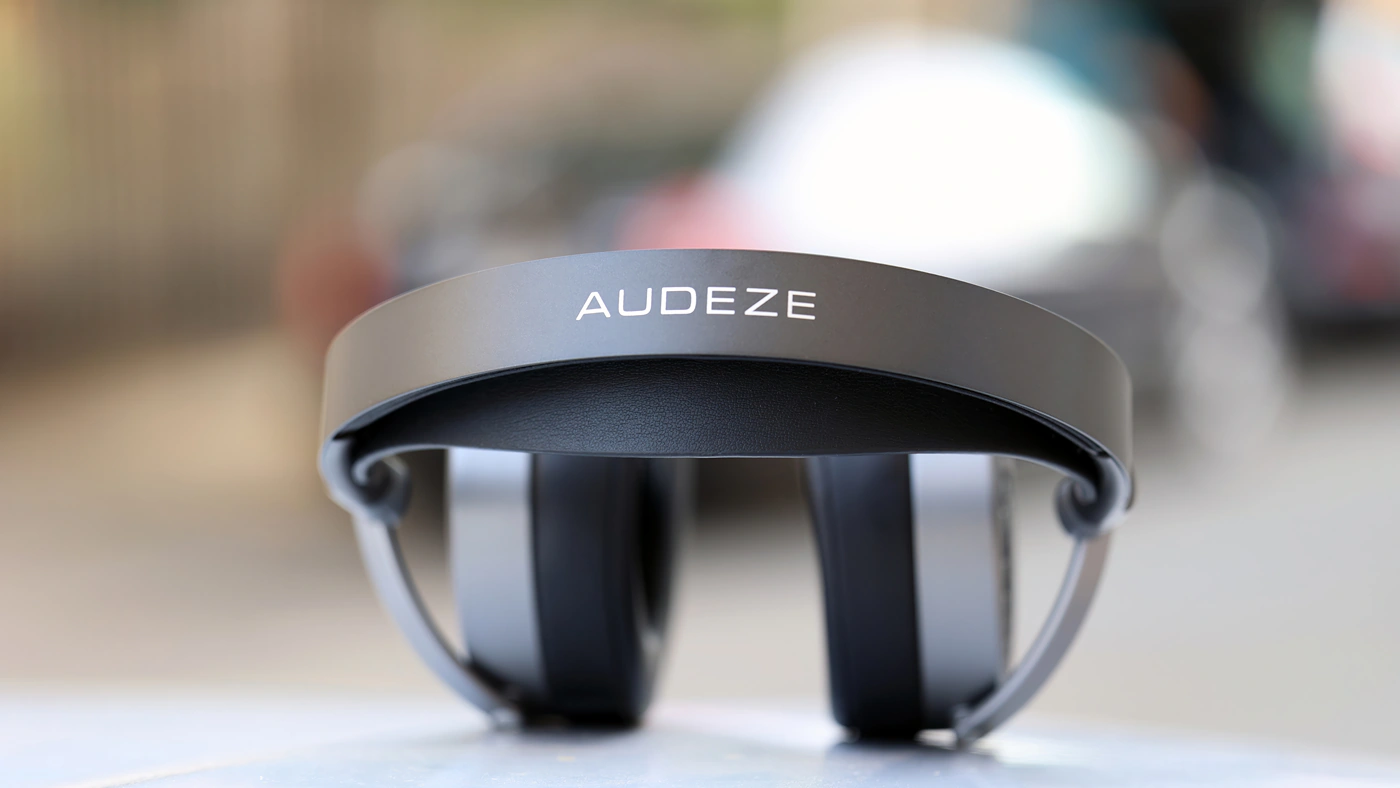
To achieve this, the earpads are thick, dense, and offer a strong clamping force, as well as having a curvature towards the inside of the headphones and the drivers, and slowly making you adjust them to the same position and spot every single time. The new drivers are designed and built with the same dedication as was used in the LCD-5, and they feature new patented waveguides, magnet arrays and diaphragms, offering a performance that typically is not heard of in this price class.
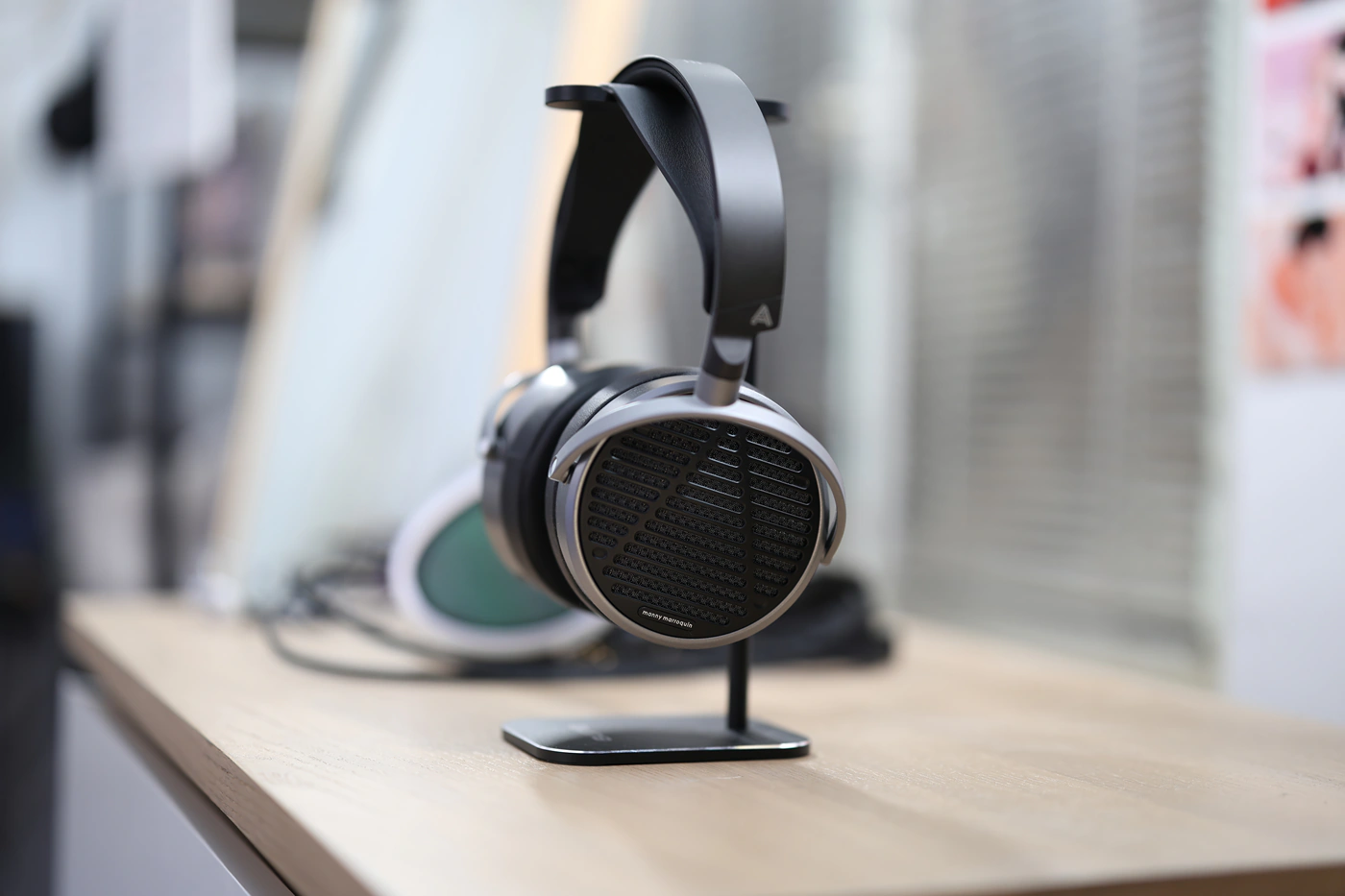
Although the weight is still on the higher side, the earpads filled with gel offer a much better comfort, and the clamp is never uncomfortable, as MM-100 manages to sit really comfortably on my ears, with no hotspot, and the headband is also adjustable to everyone, all anatomies included. Something I only discovered after having really started to work with MM-100 is that they are single ended, and you can plug the cable in either the Left or the Right Earcup, with no difference in sonics between which one you’re using, but offering a better workflow when producing and working with music, as you’re not stuck with the cable on the left only as with most headphones. There’s a soft cover bag included in the package for when hitting the road, and MM-100 can fold flat for transport.
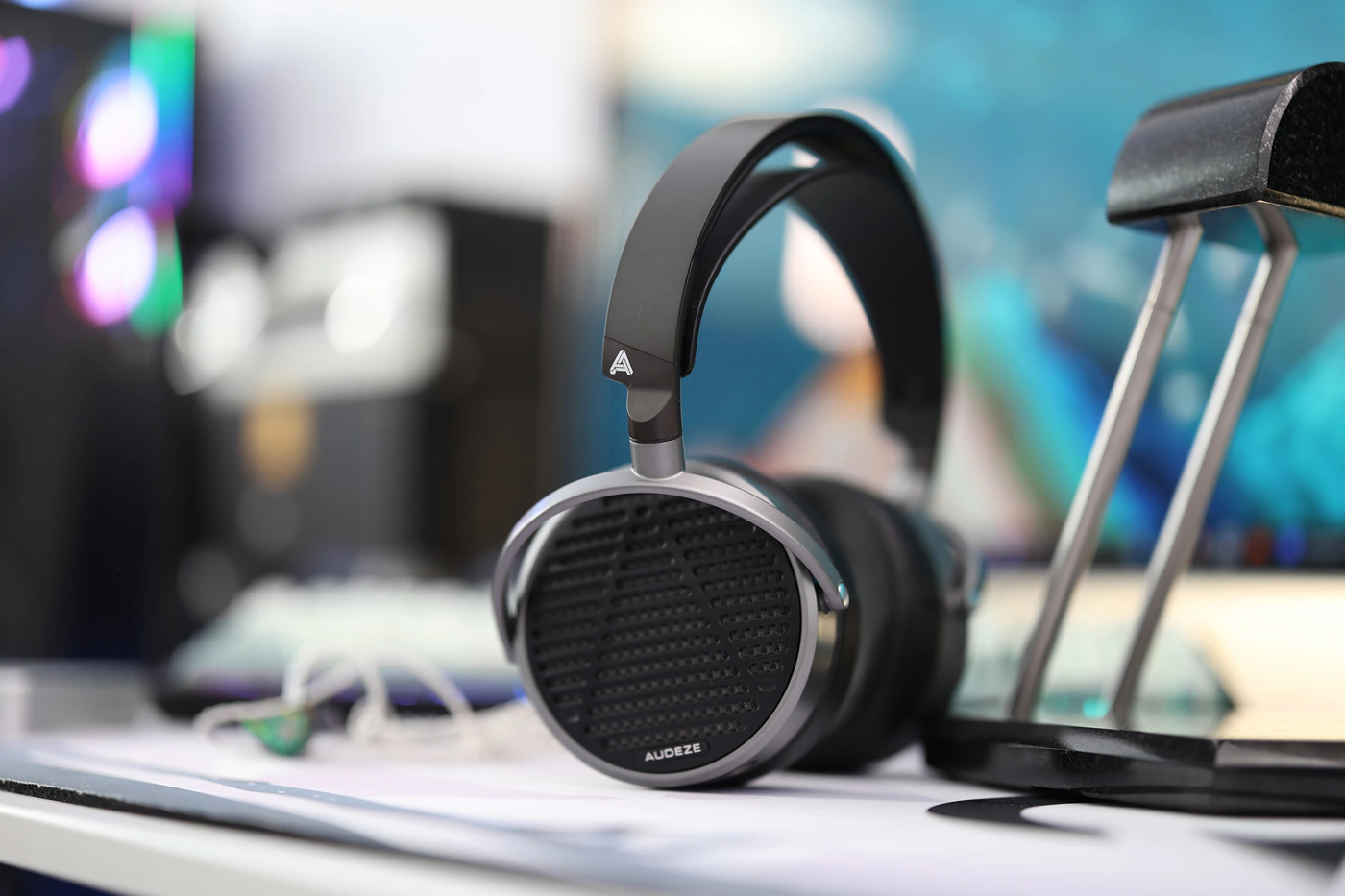
Each pair of MM-100 headphones is made to survive actual usage, and they are hand assembled and tested in Southern California, in Audezse’s own workshop, ensuring proper fitting and sound. The weight is 475 grams, 471 grams measured without the cable, but it is evenly distributed by the soft gel-filled earpads and the headband, so there is no hotspot, and the headphones feel comfy in all positions. There is a bit of passive noise isolation, around 10dB, but it is not high, as those are open-back and will also leak quite a bit of your music to the outside.
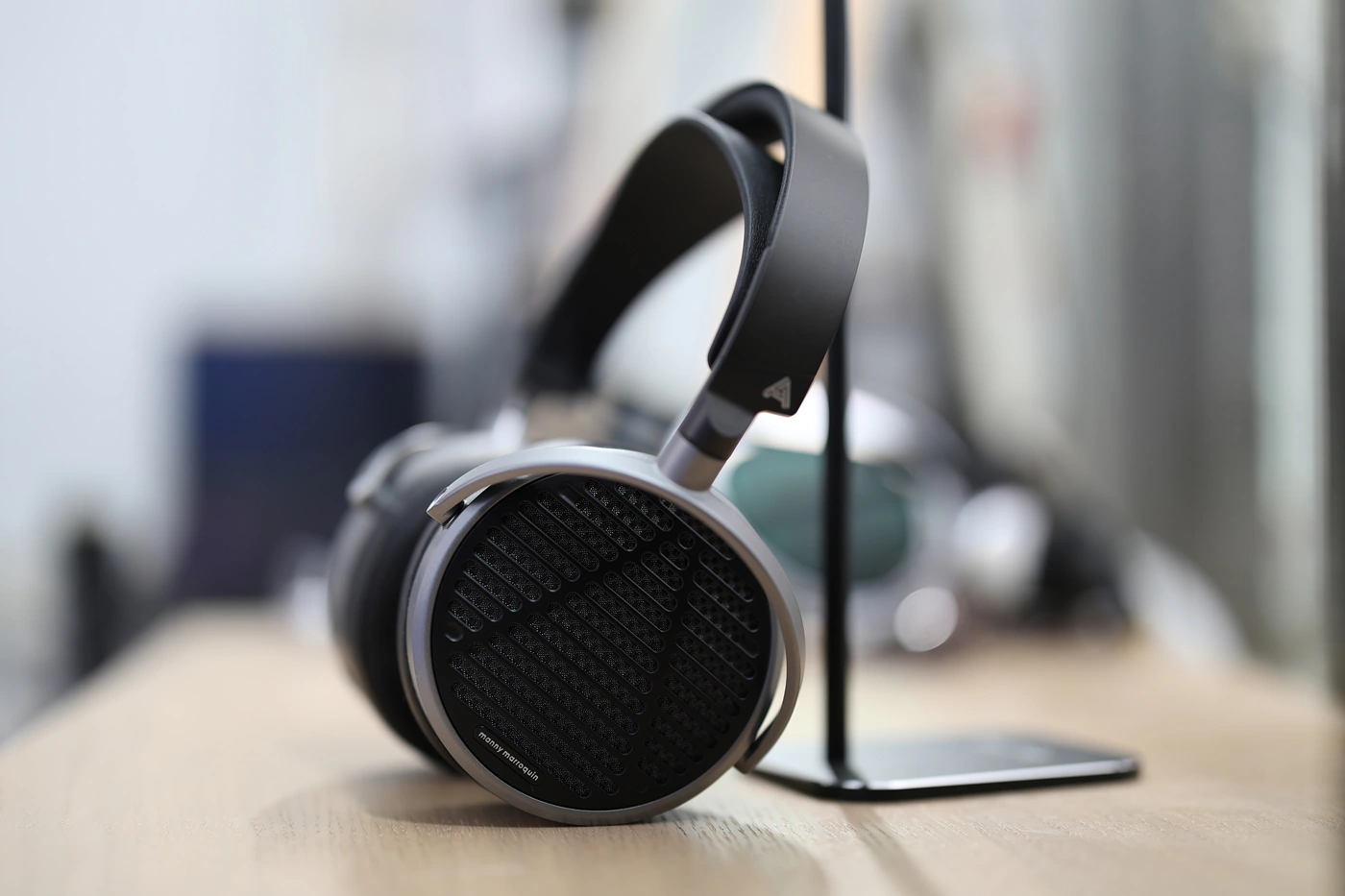
The heart of the sound is provided by the Planar Magnetic drivers with Fluxor magnet arrays, and Fazor phase management technology. The magnets are N50 Neodymium and the Diaphragm used is an Ultra-thin Unofrice diaphragm, the transducer having a huge 90mm size. With a maximum SPL higher than 120 dB, you will be able to both work and party using MM-100, and with a THD of lower than 0.1% at 100 dB, you should never have to fear noise even if you push them loud. The SPL is 98 dB / 1mW, which is not a high SPL but not a low one either. Combined with a low impedance of 18 OHMs, Audeze MM-100 is easily drivable from all portable sources, including stronger dongles. We have a high maximum power handling of 5W RMS, but a minimum recommended power of at least 100mW, with a Recommended power level of 250 mW, numbers easily achievable by most sources. The cable has a length of 2.5 meters, and it is a single ended cable ended in a 6.3mm large connector, with an adapter to the smaller 3.5mm format included in the package.
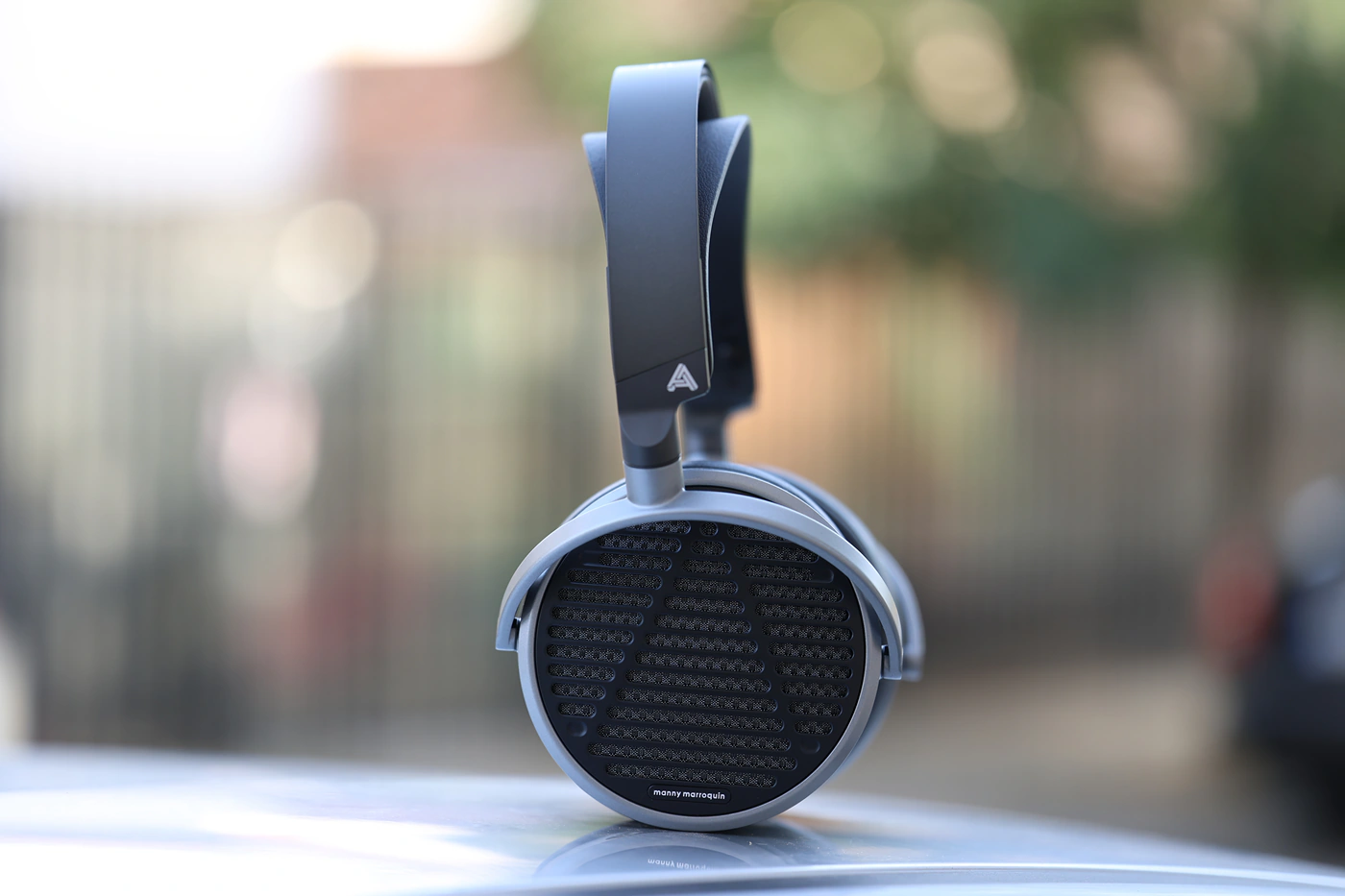
To test and drive the Audeze MM-100 Headphones today I have paired them with a wide selection of sources, including iBasso D16, iBasso DX320 MAX Ti, Musician Pegasus II R2R DAC driving a HIFIMAN Prelude Amplifier, HIFIMAN Serenade, Aune S9C DAC/AMP, HIFIMAN EF600, Aune S17 PRO Amplifier driven by a Topping D50 III DAC, and HIFIMAN EF400. Generally speaking, MM-100 is very easy to drive and despite the low impedance, they are not very sensitive to source noise and should stay clear and clean with all sources out there. The sound is neutral and clean, so the coloration of the source will be transmitted to the headphones, but it is a weak coloration, so the sound will be fairly consistent with most sources.
Sound Quality
Overall Signature – Studio Headphones generally need to sound as transparent as possible, Audeze MM100 following the rule and sounding really crisp, revealing, detailed and transparent, with very little coloration added to the sound. This means that it will reveal everything about the source material, including the side of the soundstage, how textured, grainy or smooth the sound is, as well as overall tonality, showing exactly whether the original sound is dark, smooth or bright. And here we are talking about the sound of the song and recording, as MM 100 stays consistent across sources, so you have one less thing to take into account when considering what influences the sound of your setup. Neutrality, high sharpness, high contrast and acting like a magnifying glass that shows you all the layers and hidden information in your music are all good ways to describe MM-100. The technical performance is much higher than the price point would indicate, as MM-100 is exceptionally technical.
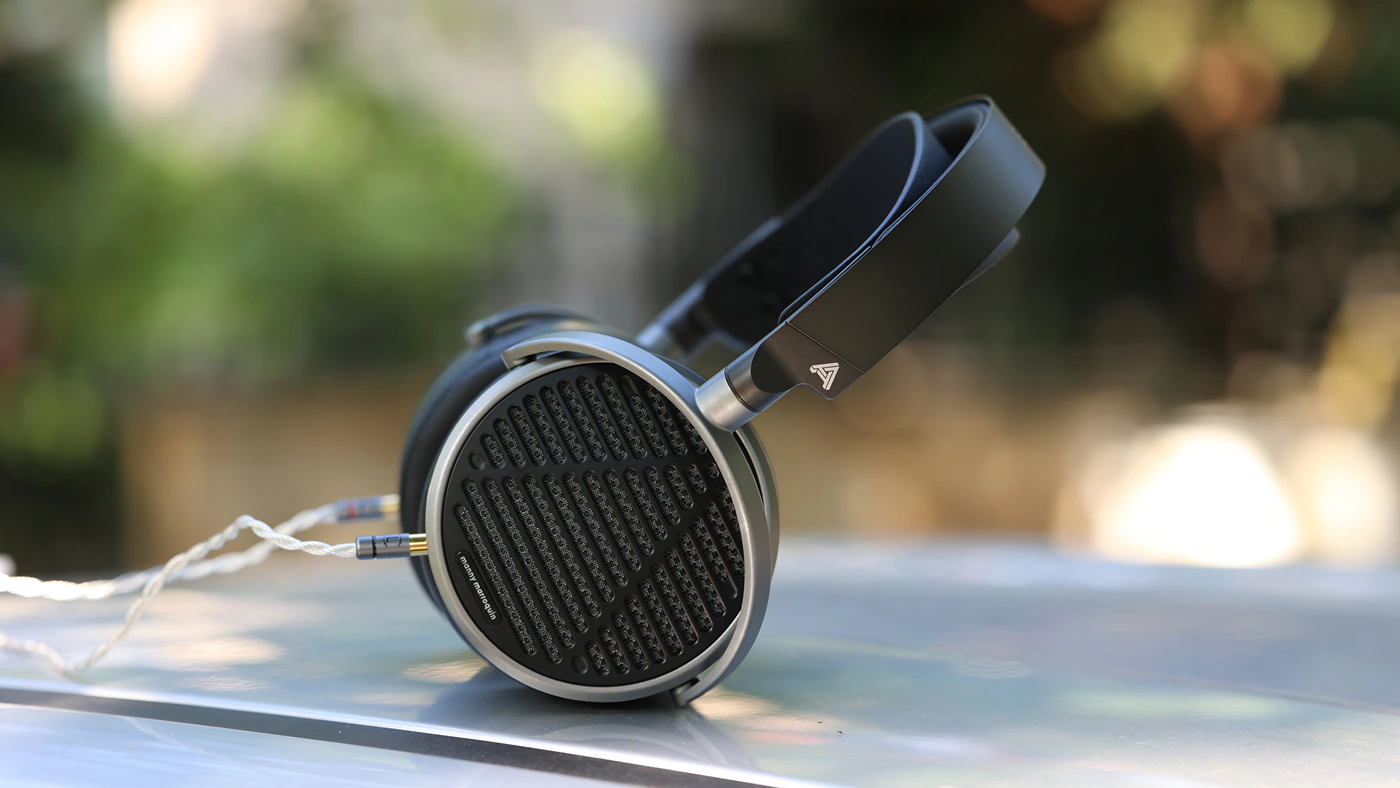
Bass – The bass is mostly neutral, but it can safely reach 20 Hz, if the song really asks for it. With most music, and the general mixing / mastering, the bass will stay quick, snappy and neutral, showing texture and grain when it is present in the bass, but also showing smoothness and zero distortion when the song is mixed and mastered as such. Most music sounds neutral, with very little bass depth and weight, because that’s the typical master and mix for the rock and metal I typically enjoy. BNut when I press play on songs that have a strong bassline, like Nightmarish, or some EDM like Daft Punk – Television Rules The Nation, the bass has a strong kick and impact, quick and precise. Most music will stay neutral, and there is zero upper bass bleed or extra coloration, the whole sound being as controlled, clean and transparent as imaginable in the low end.
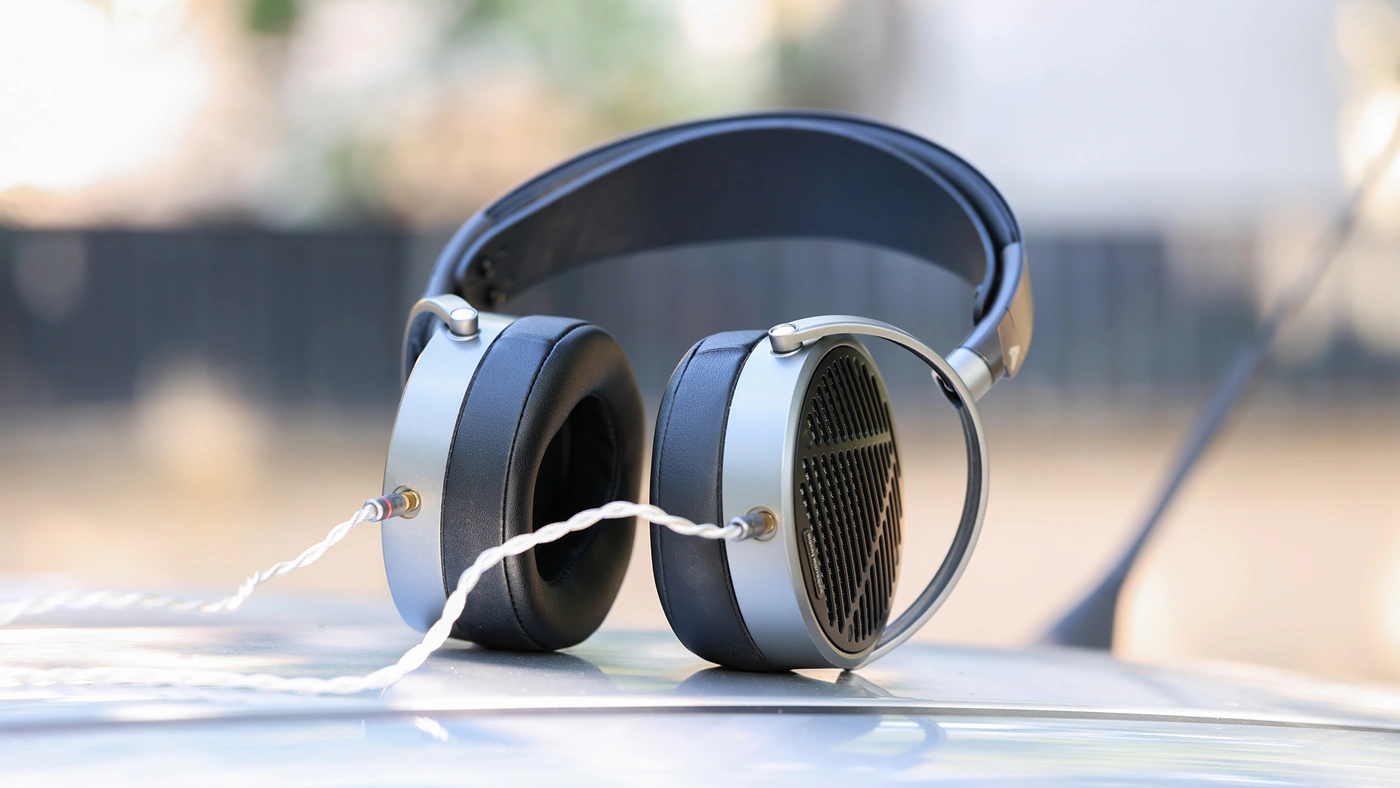
Midrange – It is only natural that we continue the neutrality path to the midrange, and MM-100 applies to beauty blenders and filters, it shows the music exactly as it is, revealing the sharpest edges found in the square waves of EDM tracks, but also the finer tube distortion found in the amplifiers of rock bands, as well as grain and textures throughout all the songs in my collection. This would make them better for mixing and mastering than for listening, at least in theory, because always hearing exactly what is present in your music can be a bit fatiguing, but happily those sounds are not overly fatiguing, they are present, you hear and know about them, they are sharp, but my ears never feel fatigued by the MM 100 sound, music is plenty rich and sounds enjoyable. Male voices are on the slightly thin side, with good depth and impact, but no extra thickening, and you can hear exactly how much texture and grain is present in a voice, allowing for perfect mixing and mastering, and dynamic compression to be applied during the production process. Female voices are generally energetic, clean and fun.
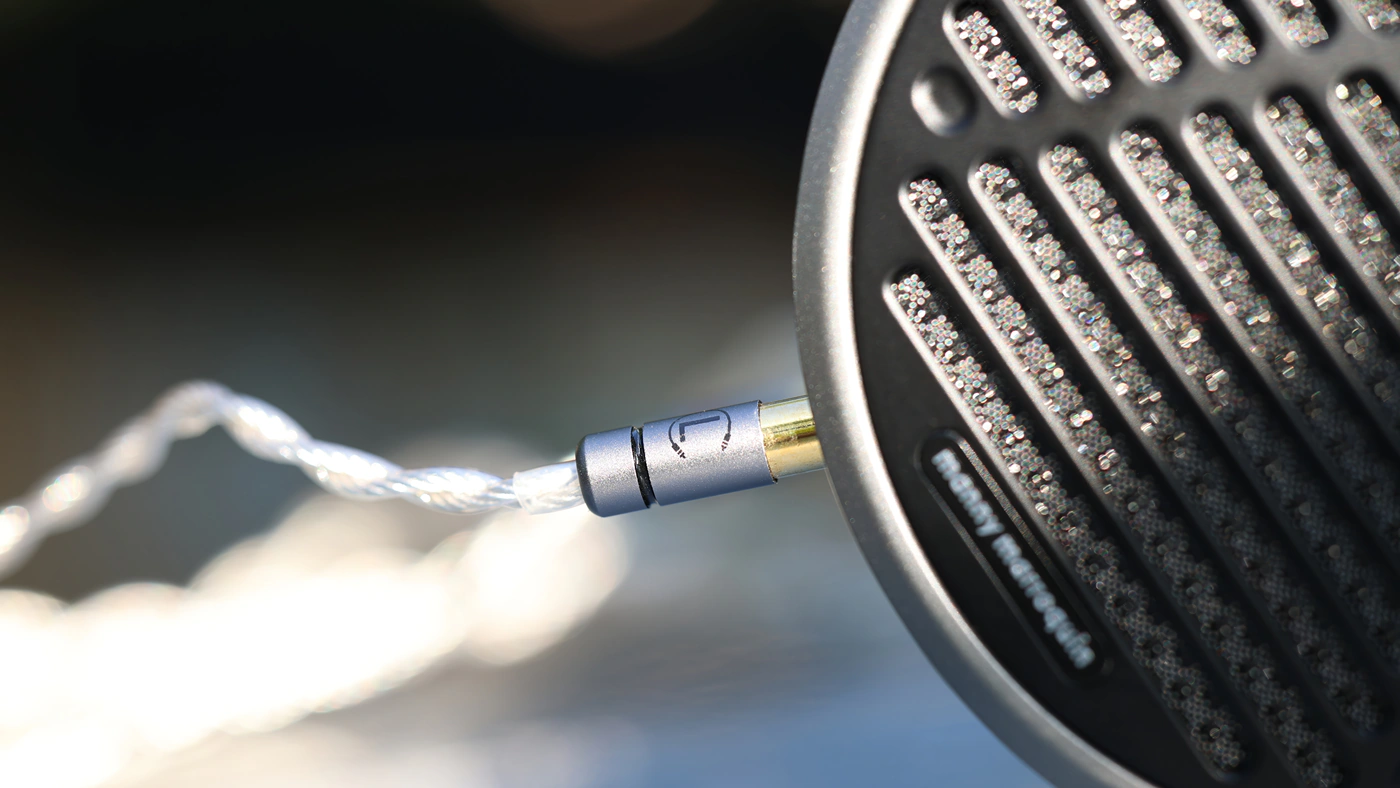
Treble – Treble is sharp, brilliant and airy, extended up to the maximum of my hearing, or about 18 kHz. The treble presentation is fast, ever so slightly smooth, so the sound is never too fatiguing and too harsh, unless the song is exaggerated up there, like the first album of Infant Annihilator. Even there, though, you hear the treble bright and extended, and the only album which I found to be quite bright has been Sirenia – An Elixir For Existence, which is indeed rather sharp and bright, but you’d want to know about it when you’re adding too much sparkle and treble relative to the mids and the bass. MM100 as a headphone is clean and the treble does not have any added grain, most treble actually sounding less grainy than with very critical headphones. There is a reason why you’d upgrade to MM-500 if you’d want even more resolution, but MM-100 reveals a lot of what’s available in your music and does so in a manner that allows you to work with music and sound for hours in a row, as during the writing of this review I’ve been working on tracks for more than three hours.
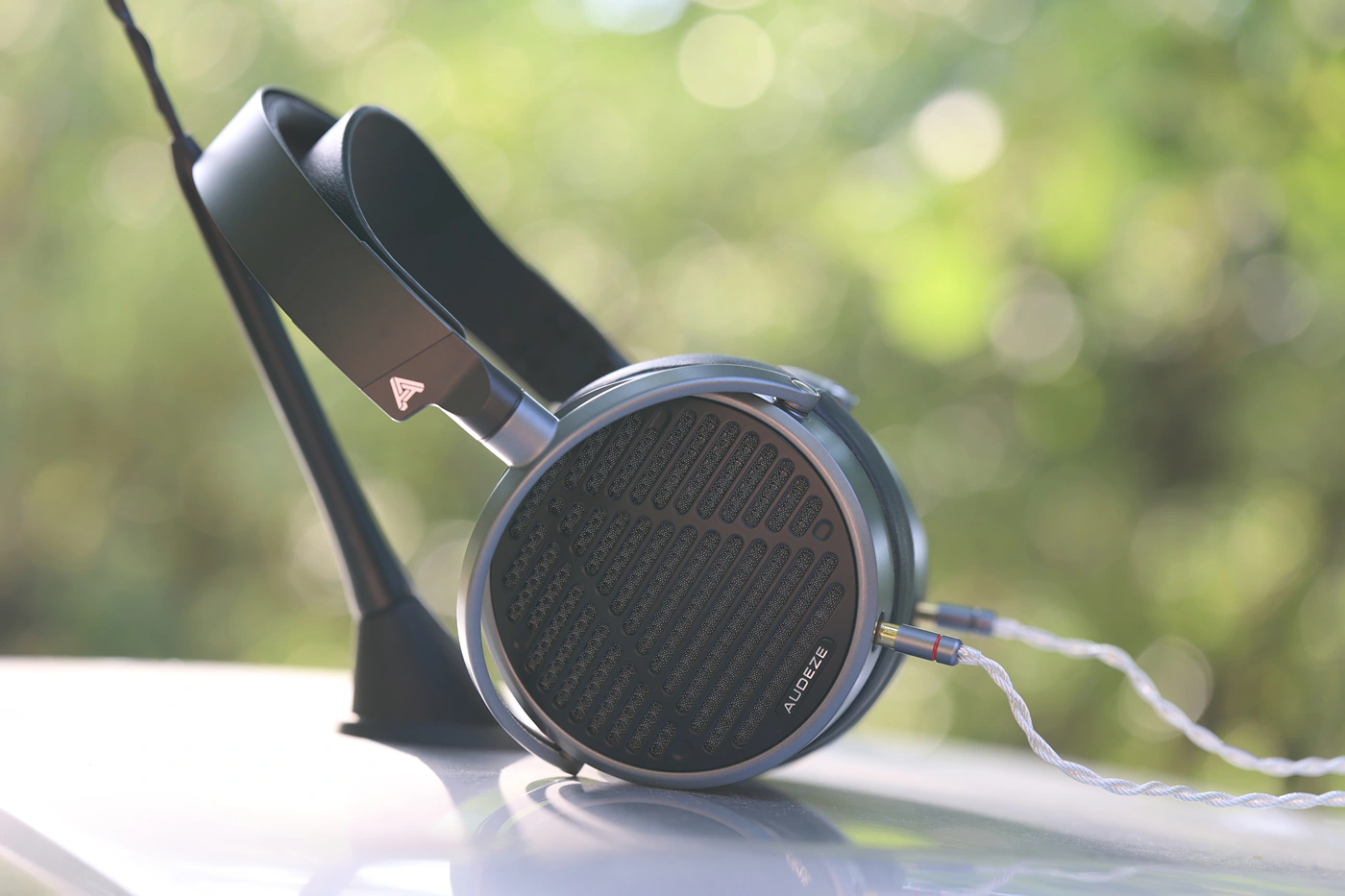
Dynamics / PRaT / Textures – While I talked a lot about textures and how well represented they are, and how evident they are, it is good to keep in mind that MM100 does not add those out of thin air, and uncompressed, unprocessed classical music, the sound of high-end pianos and violins bear zero grain and a smooth texture. Compression is not present, and forward, compressed songs will sound as such, while uncompressed music will be quiet, have a high dynamic range, MM 100 once again being perfect for revealing what you’re doing to a track in real time, and how it is supposed to sound like. Textures are plenty and rich, revealed exactly for what they are and how they really exist in your tracks, MM-100 acts as the microscope that shows you what’s under, it does not emphasize sounds in any way, just allows them to be transmitted and shown as they are.
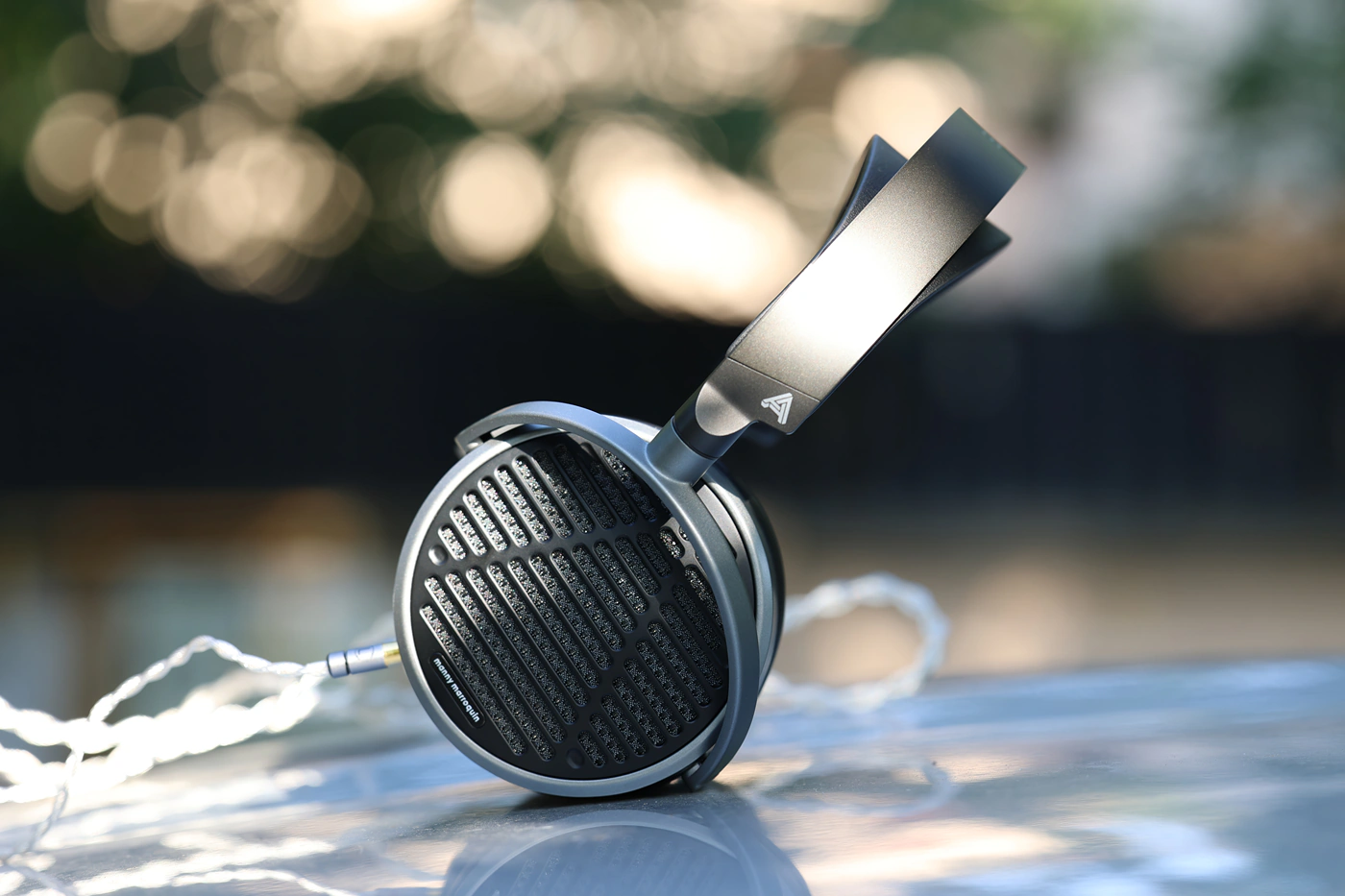
Volume Control – Volume control is great, and despite the somewhat conservative numbers Audeze has on their web page, I could not hear the THD up to about 115 dB, after which the THD does grow a bit, but no music work can be done this loud, and even for listening I would avoid pushing the volume so much. The sound is very consistent across low, medium and high listening volumes, with very little variation in the tuning, dynamics or textures, everything sounds very similar regardless of how loud you’re pushing MM-100. While it may sound uninteresting, this is a golden thing for a headphone made for studio work.
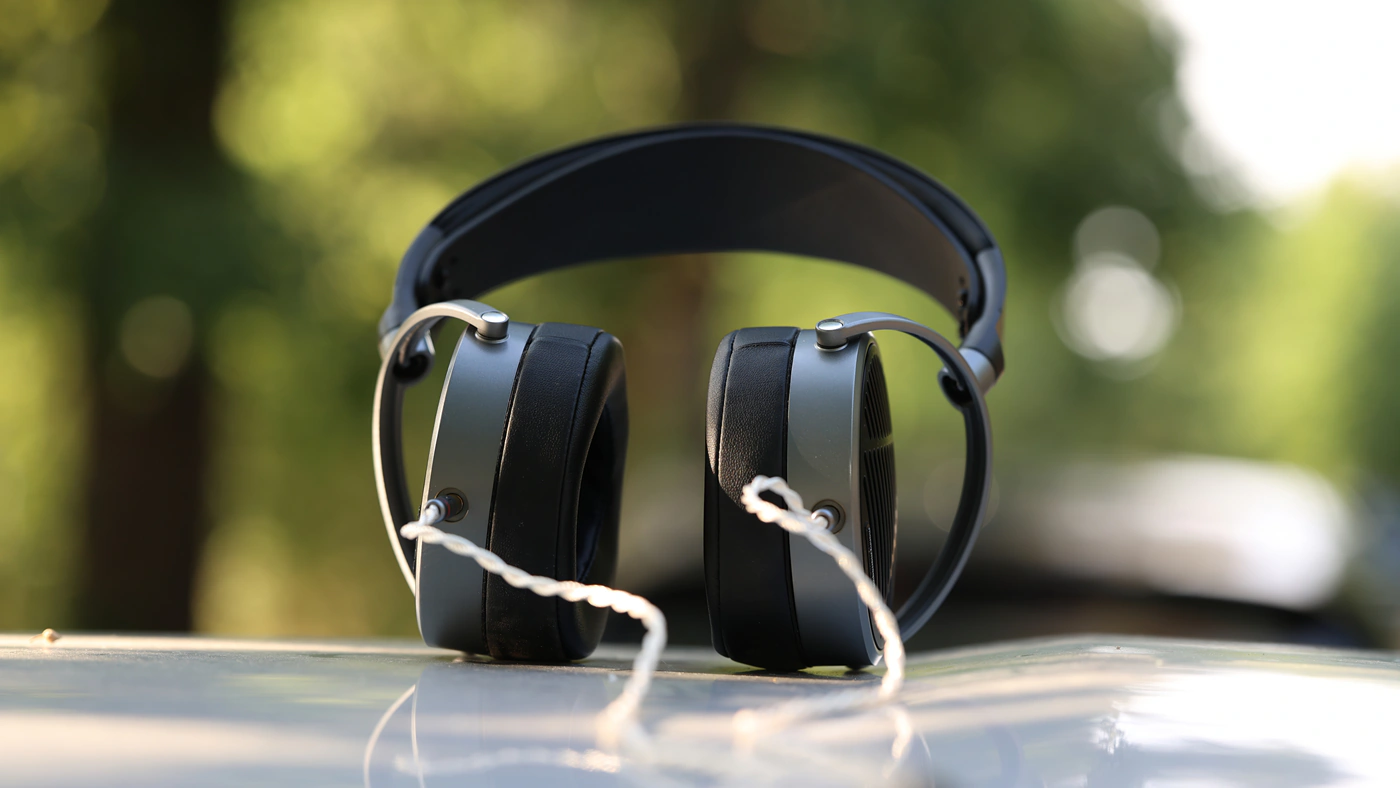
Soundstage – As everything so far has been rather transparent, the Soundstage tends to also showcase exactly what is going on in the song, although there is a slight tendency for the staging to compress things, and bring all sounds closer to the listener. MM-100, while not an intimate sounding headphone per se, does its best effort to bring sound close to you and reveal it, so you can expect a natural towards intimate soundstage, music can extend endlessly in width if the song is mixed and mastered like that, but voices are almost always intimate and next you your ears, while instruments are allowed to expand more. This is actually normal, as most voice tracks are recorded using mono microphones and should sound very close to you. A good song for testing the soundstage is Om – Meditation Is The Practice Of Death, where the thick and heavy basslines can travel freely all around you, while the voice is somewhat distant, as it was recorded using a different technique than we see for most tracks. It is an immediate difference from the song Addis also from the band Om, but from their future Advaitic Songs, which use more dynamic compression, and which makes the entire soundstage a bit more intimate, although the sound evoked are large in nature.
Studio Usage / Gaming
A headphone that we studied so much for studio is surely fit for actual music work, and compared to Audeze MM-500, the new MM-100 makes far more sense for mixing, mastering, even DJ-ing and other music work, as it is more affordable, and you’ll cry far less after a headphone costing 399 USD, than one costing 1699 USD. You can get better sonics, more standard cables, and even better sonics using MM-500, but the price difference makes the MM-100 easier to recommend for those who want a tool they can throw around and rely on in the rather harsh music production environment.
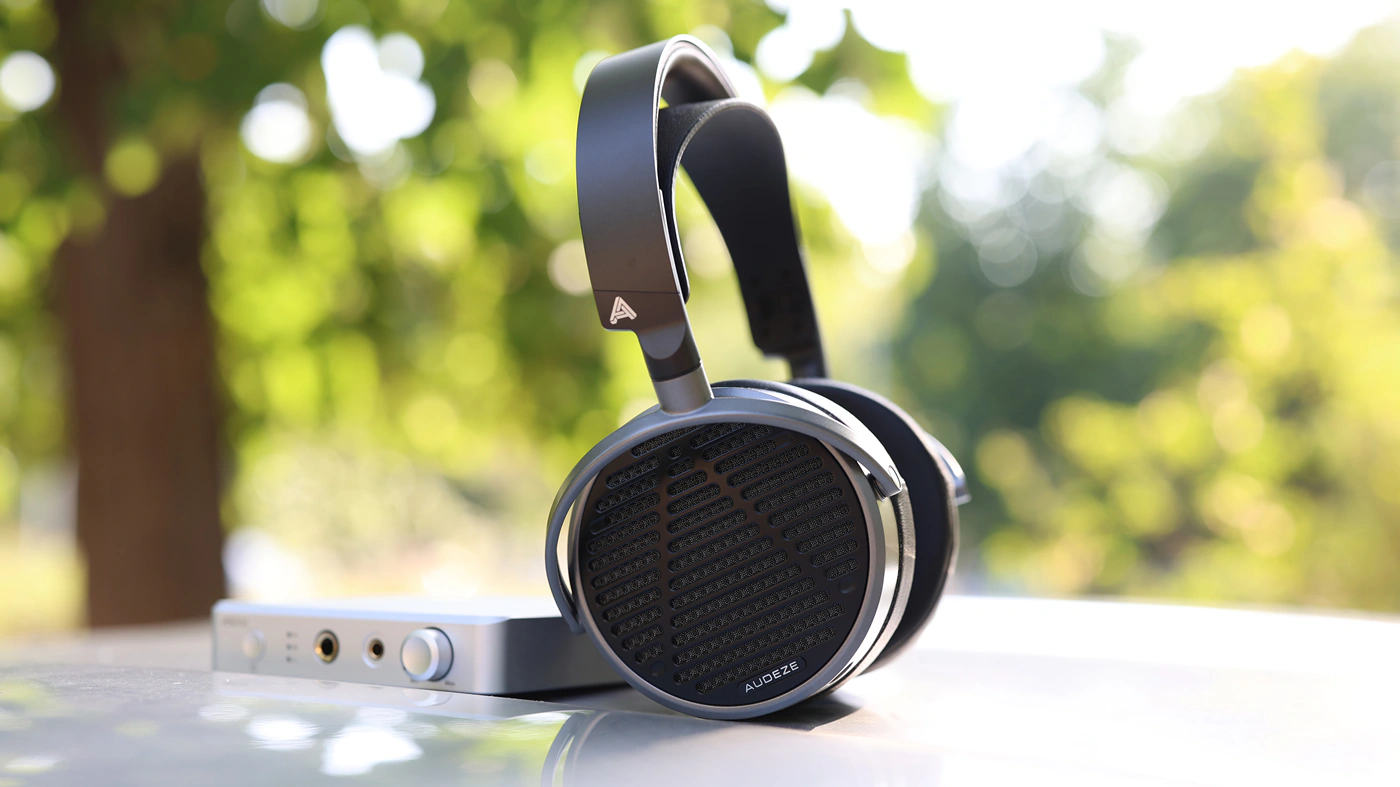
When used for gaming, I can recommend MM100 for their resolution, detail and clarity, excellent imaging and precision for the soundstage, although the neutral tuning makes most background music in games and most game sounds / impact sounds and such less impactful and a bit too precise. This means that this is a great headphone for game sound design though, as you won’t overdo things, and during game design you want something neutral and clean, not a colored sounding headphone to work with.
Comparisons
Audeze MM-100 vs HarmonicDyne Zeus Elite (399 USD vs 379 USD)
Build – Zeus Elite is a much lighter headphone, it comes with bi-lateral cables, which allow for upgrades, but they do come with an ultra upgraded cable from the factory. MM-100 can only use single ended cables, but is far less sensitive to source quality, so upgrading the cables would not make much sense, but Zeus Elite has a much lighter clamping force, lighter weight, and also comes with a solid transport case, which is not very practical as it includes glass and could break during transport. While both headphones are made well, I would trust Audeze MM-100 much more to survive harsh usage, while Zeus Elite feels more fragile and artisanal.
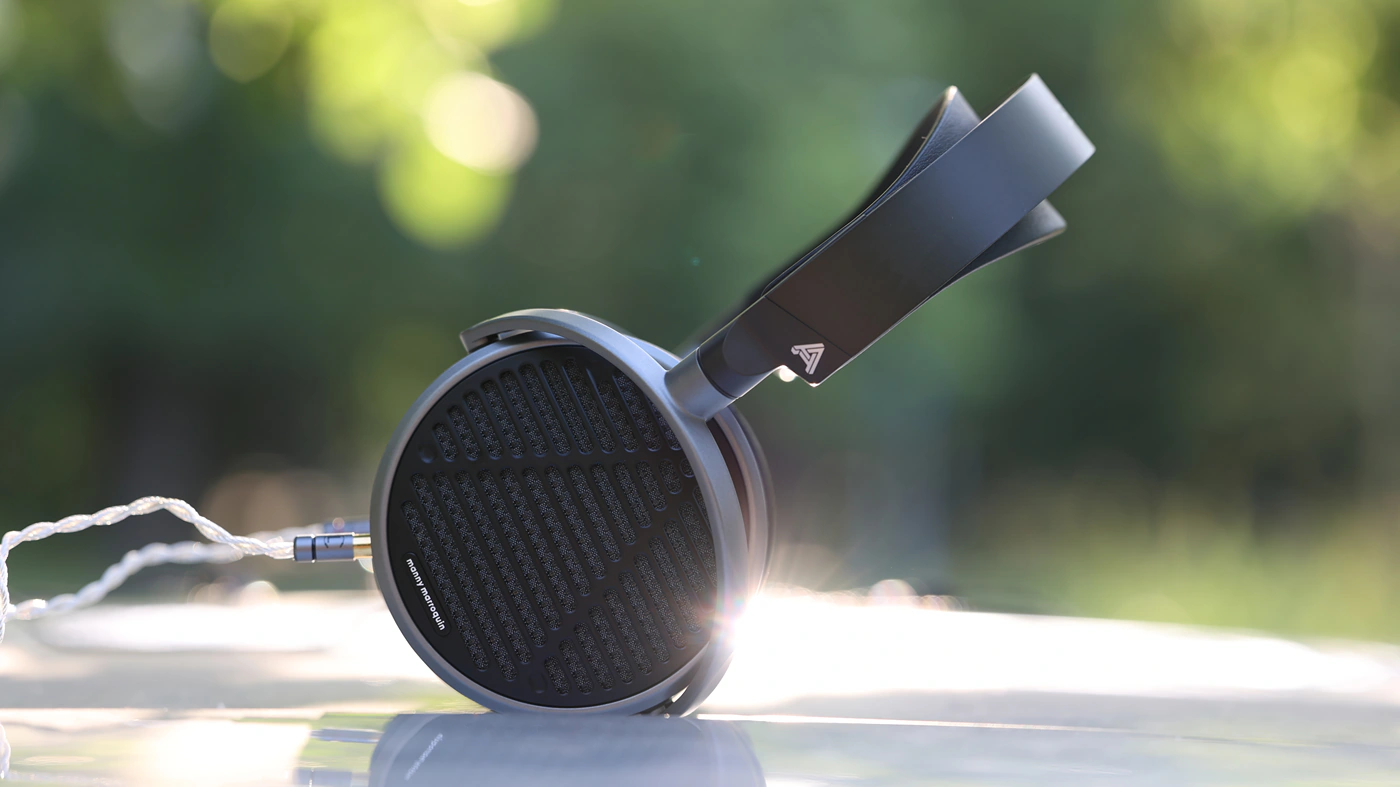
Sound – If you love precision, clarity and hearing absolutely everything, MM-100 is made for you, as Zerus Elite is a far softer, richer sounding, but deeper and more colored sounding headphone. The technical edge and side is much stronger as presented by Audeze MM-100, it can reveal far more information in music and show you exactly what you’re supposed to hear from each song, while Zeus Elite will gloss over the little details and take you on a romantic trip, with a warmer, slower bass, richer but less detailed midrange, and with a more natural treble. The soundstage is about equal between them, but MM-100 shows far more difference between different songs and albums, while Zeus elite paints a similar staging across all music. There is a bit of coloration all across the range for Zeus Elite, including their specific 11 kHz peak, which can turn the midrange cold and bright, while MM-100 is neutral by definition without any cold or warm coloration.
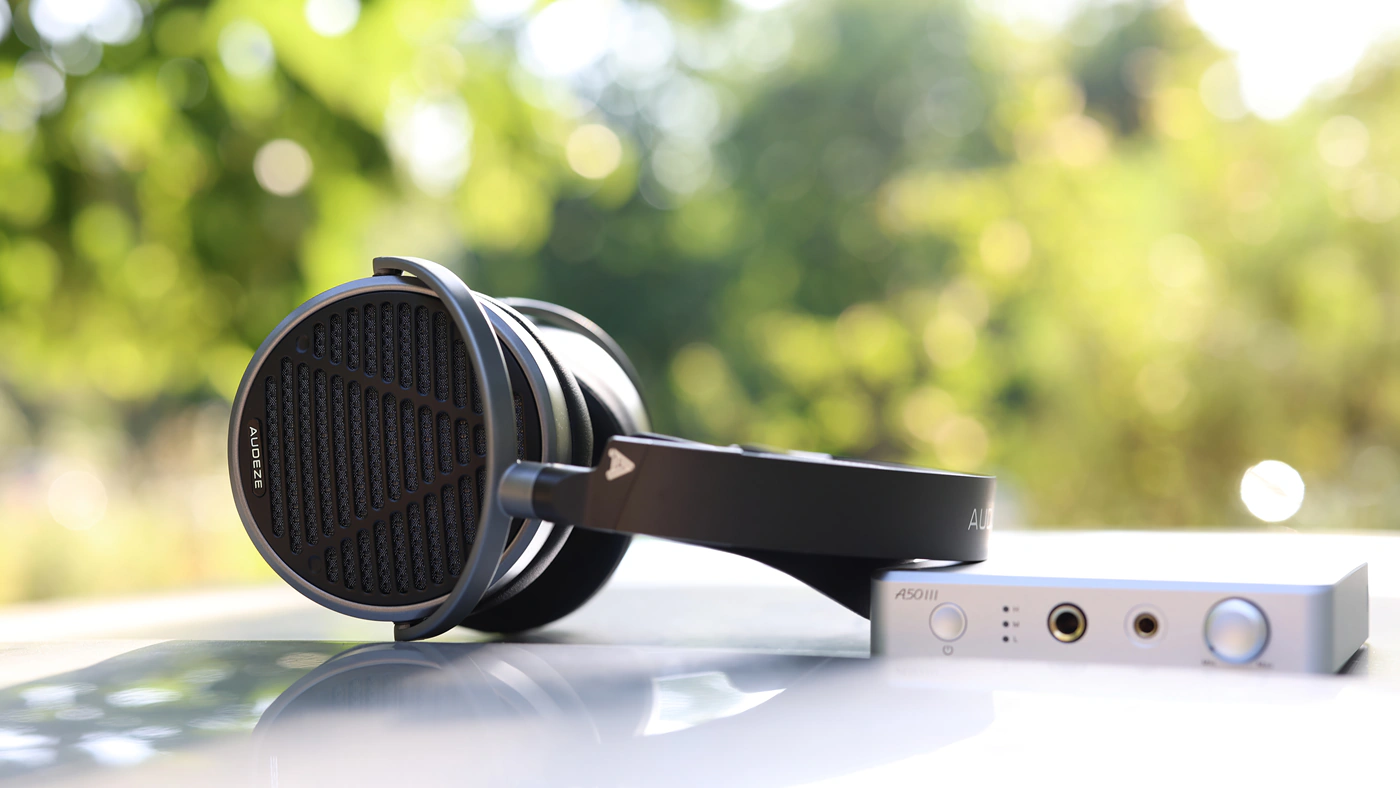
Audeze MM-100 vs Erzetich Thalia (399 USD vs 599 USD)
Build – Thalia is made of metal and wood, it is lighter, and can be configured more for the shape of the head, but at the same time the earpads are harder, smaller and the design is on-ear, while the design of MM-100 is over-the-ear. Thalia is harder to drive, needs a good source to truly shine, while MM-100 sounds great with most sources. Thalia isolates a bit more from the outside noise, and leaks less, despite both being open-back in design. Thalia is more portable, and just as resistant to wear as MM-100, but you can upgrade the cables of Thalia, while MM-100 can only use the included 3.5mm line to line single ended cable.
Sound – Thalia is a warm and smooth sounding headphone with a slower, more romantic bass, big sound, but musical and clean midrange, and a smoother, rich and pleasing smoothness, and a crisp treble. MM-100, in contrast, sounds well defined, clear and neutral, has much less bass and mid bass, but more revealing technical ability, with a colder, less colored sound. MM-100 is great if you need that crisp studio sound, while Thalia shows what a true audiophile tuning comes through like, as they have a really pleasing tuning with soft colorations and an engaging approach to music.
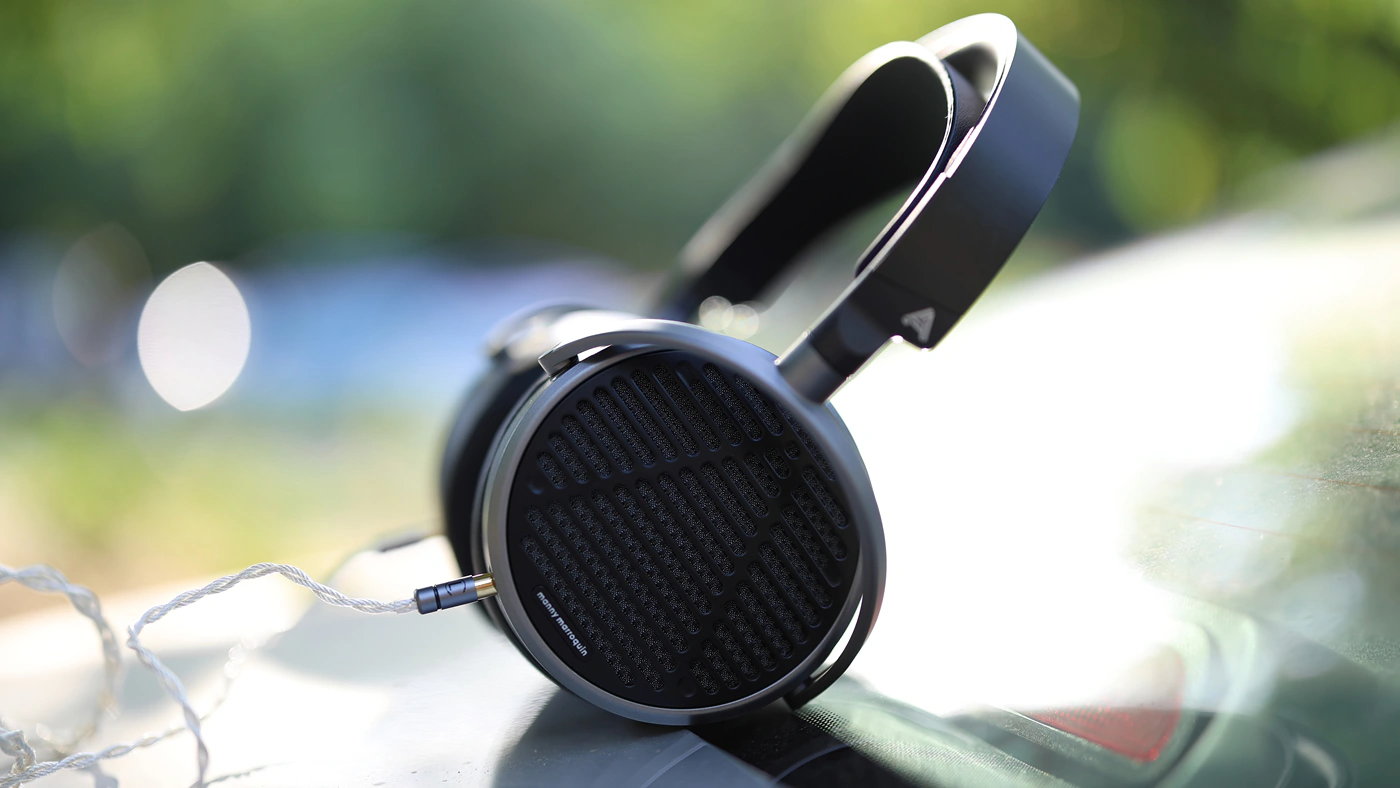
Audeze MM-100 vs OLLO S5X (399 USD vs 379 USD)
Build – S5X is a headphone that is made especially for studio usage, and it used to be the most recommended headphone in this price range for studio work, but Audeze MM-100 has a more consistent performance relative to sources. OLLO S5X is really comfortable too, lighter than MM-100, but has smaller earpads, smaller earcups, easy to replace cables, needs bi lateral cables, and it isolates a bit more from the outside noise, leaks a bit less, while having a slightly better comfort. As S5X is a bit more sensitive to source, MM-100 is easier to use in the studio where the sound source is generally not as great as you find in the setup of a diehard audiophile.
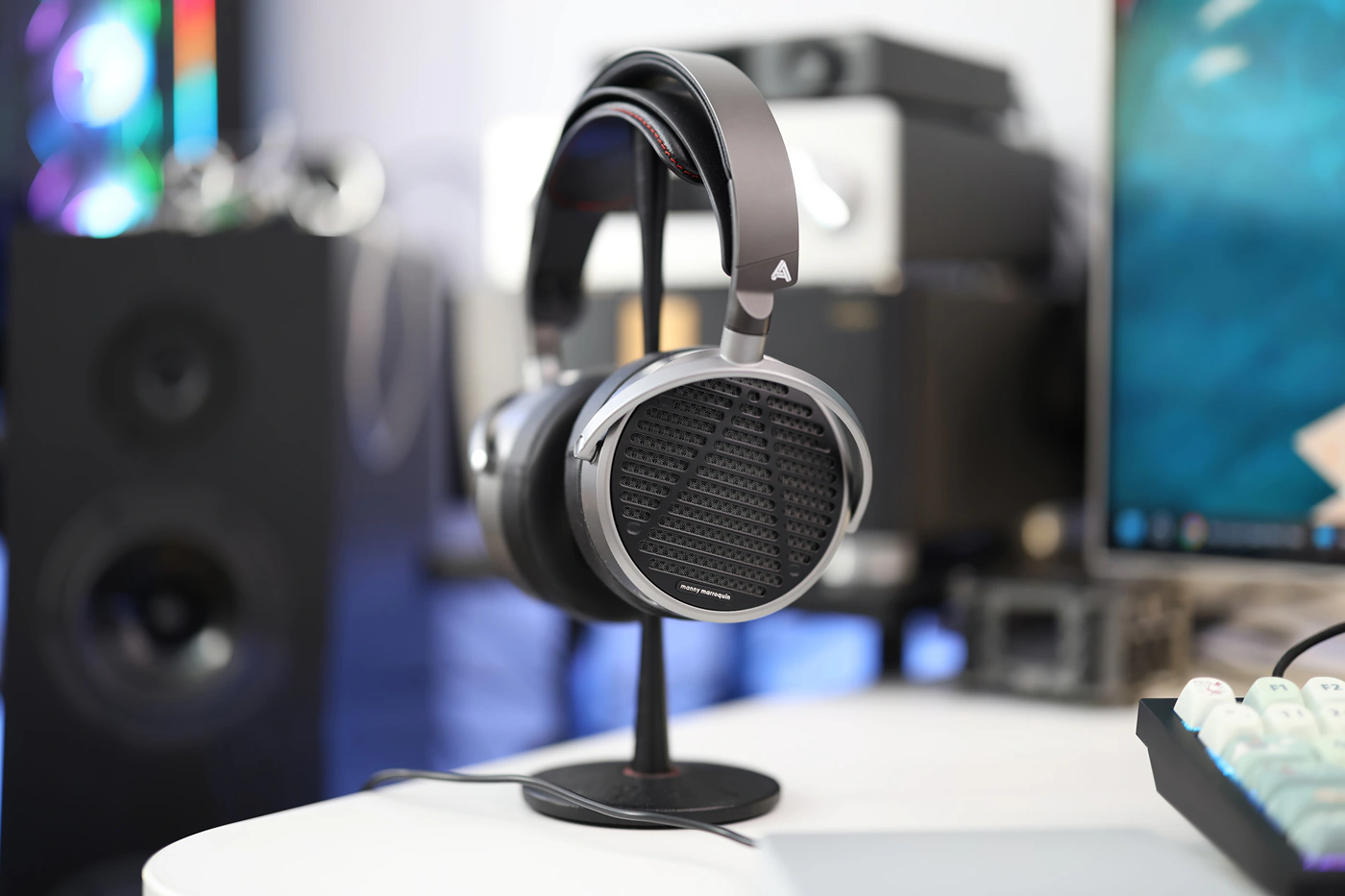
Sound – Sonically, both are very detailed, but MM-100 is more neutral, has less bass and more treble, while S5X provides a flat sound, very strong midrange, more bass and less treble, being less fatiguing for long hours of music work. S5X is quite great for when you want to have a really strong detail and resolution, but it sounds really quick and dry, while MM-100 is more natural and richer sounding. This makes it easier to overshot with certain effects while using S5X, which are reproduced more faithfully with MM-100. Audeze also made the MM-100 peak at 9 kH for the treble, while S5X has a much lower peak at 6 kHz. Overall, both are great studio mixing and mastering headphones, but MM-100 is more neutral, while S5X is more colored, and more dry.
Value and Conclusion
For Pure transparency, and a high-end headphone that’s perfect for studio work, Audeze MM-100 has the highest value rating possible, they offer everything an audio engineer wants and requires, but it is also a fun to listen to and enjoy headphone, working well with all music styles, and being comfortable for long periods of wear, so for top value look no further, MM-100 has you covered.
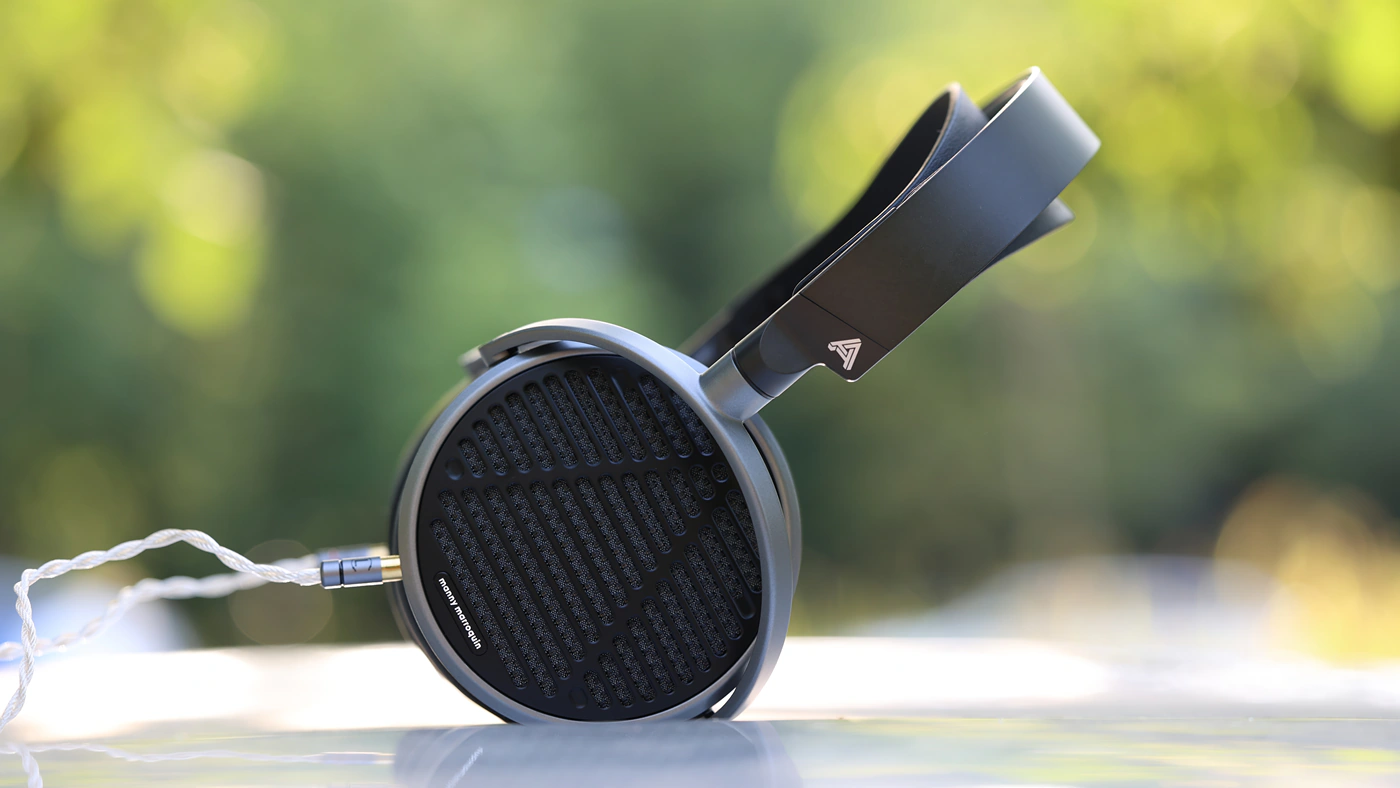
There is such a high difference between a high-quality studio headphone and an audiophile one, and MM-100 sits at the boundary where it can satisfy both customers, they are super pleasing to listen to for properly mixed and mastered music, but will show micro differences with each effect applied to a track, they will reveal how wide you’re making that mix sound like, and how much texture is in your songs, without requiring a high-end audiophile DAc/AMP to sound good, so if you’re looking for a headphone that can sound great for both music workers, but also audiophiles, Audeze MM-100 is an excellent choice and a fully recommended purchase on Audiophile-Heaven today.
Product Link
Amazon – https://amzn.to/3XfRkcG
--- Please remember to stay safe, and always have fun while listening to music!---
- If you have a dime to spare, please donate, and help us! It would make the day brighter for me and my wife-
Full Playlist used for this review
We listened to more songs than those named in this playlist, but those are excellent for identifying a sonic signature. I recommend trying most of the songs from this playlist, especially if you’re searching for new music! The playlists are different for Spotify, Tidal and Youtube, and based on the songs I enjoy and are available on each!
https://www.youtube.com/playlist?list=PL_cjBXGmwSHSdGcwuc_bKbBDGHL4QvYBu
https://open.spotify.com/playlist/5J3oloz8Riy9LxEGenOjQ0?si=979ba4f082414be7
https://tidal.com/browse/playlist/330fd544-8e5b-4839-bd35-676b2edbb3d5
--- Contact Us ---





